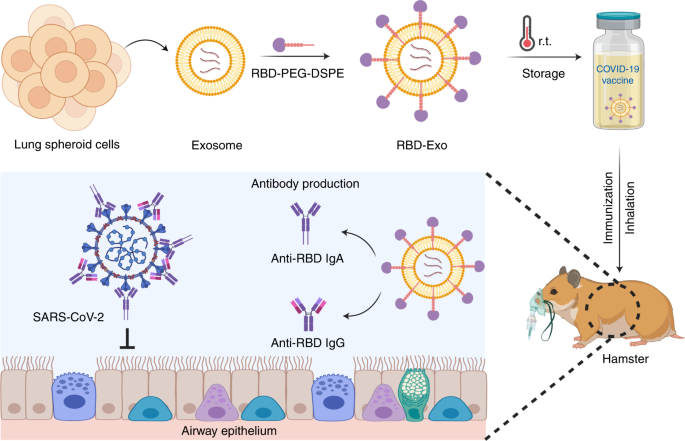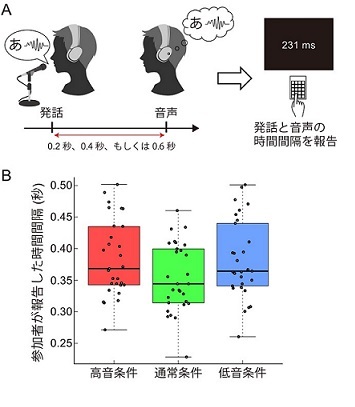2022-07-05 ノースカロライナ州立大学(NCState)
肺に直接ワクチンを届けるために、研究者達は、肺スフェロイド細胞(LSC)から分泌されるエクソソーム(Exo)を使用しました。エクソソームはナノサイズの小胞で、近年、薬物送達の優れた手段として認識されている。
研究者らは『Extracellular Vesicle』誌の論文で、合成リポソーム粒子よりも肺由来のナノ粒子の方が、mRNAやタンパク質の輸送物を気管支や肺深部組織へ効率的に送り込めることを実証した。
次に、LSC-Exoの外装をSARS-CoV-2ウイルスのスパイクタンパク質(受容体結合ドメイン、RBD)で装飾し、タンパク質ベースの吸入型ウイルス様粒子(VLP)ワクチンを作成、試験しました。この研究成果は、『Nature Biomedical Engineering』誌に掲載されています。
<関連情報>
- https://news.ncsu.edu/2022/07/inhalable-covid-19-vaccine-shows-promise-in-rodent-model/
- https://www.sciencedirect.com/science/article/pii/S2773041722000014
- https://www.nature.com/articles/s41551-022-00902-5
吸入可能なエクソソームは、肺へのmRNAおよびタンパク質薬物キャリアとしてリポソームを凌駕する。 Inhalable exosomes outperform liposomes as mRNA and protein drug carriers to the lung
Kristen D.Popowski,Blanca Lópezde Juan Abad,Arianna George,Dylan Silkstone,Elizabeth Belcher,Jaewook Chung,Asma Ghodsi,Halle Lutz,Jada Davenport,Mallory Flanagan,Jorge Piedrahita,Phuong-Uyen C.Dinh,Ke Cheng
Extracellular Vesicle Available online 16 June 2022
DOI:https://doi.org/10.1016/j.vesic.2022.100002

Abstract
Respiratory diseases are among the leading causes of morbidity and mortality worldwide, coupled with the ongoing coronavirus disease 2019 (COVID-19) pandemic. mRNA lipid nanoparticle (LNP) vaccines have been developed, but their intramuscular delivery limits pulmonary bioavailability. Inhalation of nanoparticle therapeutics offers localized drug delivery that minimizes off targeted adverse effects and has greater patient compliance. However, LNP platforms require extensive reformulation for inhaled delivery. Lung-derived extracellular vesicles (Lung-Exo) offer a biological nanoparticle alternative that is naturally optimized for mRNA translation and delivery to pulmonary cells. We compared the biodistribution of Lung-Exo against commercially standard biological extracellular vesicles (HEK-Exo) and LNPs (Lipo), where Lung-Exo exhibited superior mRNA and protein cargo distribution to and retention in the bronchioles and parenchyma following nebulization administration. This suggests that inhaled Lung-Exo can deliver mRNA and protein drugs with enhanced pulmonary bioavailability and therapeutic efficacy.
吸入可能なCOVID-19ワクチンとしての組換えSARS-CoV-2受容体結合ドメインで装飾されたエクソソーム Exosomes decorated with a recombinant SARS-CoV-2 receptor-binding domain as an inhalable COVID-19 vaccine
Zhenzhen Wang,Kristen D. Popowski,Dashuai Zhu,Blanca López de Juan Abad,Xianyun Wang,Mengrui Liu,Halle Lutz,Nicole De Naeyer,C. Todd DeMarco,Thomas N. Denny,Phuong-Uyen C. Dinh,Zhenhua Li & Ke Cheng
Nature Biomedical Engineering Published:04 July 2022
DOI:https://doi.org/10.1038/s41551-022-00902-5

Abstract
The first two mRNA vaccines against infection by severe acute respiratory syndrome coronavirus 2 (SARS-CoV-2) that were approved by regulators require a cold chain and were designed to elicit systemic immunity via intramuscular injection. Here we report the design and preclinical testing of an inhalable virus-like-particle as a COVID-19 vaccine that, after lyophilisation, is stable at room temperature for over three months. The vaccine consists of a recombinant SARS-CoV-2 receptor-binding domain (RBD) conjugated to lung-derived exosomes which, with respect to liposomes, enhance the retention of the RBD in both the mucus-lined respiratory airway and in lung parenchyma. In mice, the vaccine elicited RBD-specific IgG antibodies, mucosal IgA responses and CD4+ and CD8+ T cells with a Th1-like cytokine expression profile in the animals’ lungs, and cleared them of SARS-CoV-2 pseudovirus after a challenge. In hamsters, two doses of the vaccine attenuated severe pneumonia and reduced inflammatory infiltrates after a challenge with live SARS-CoV-2. Inhalable and room-temperature-stable virus-like particles may become promising vaccine candidates.


